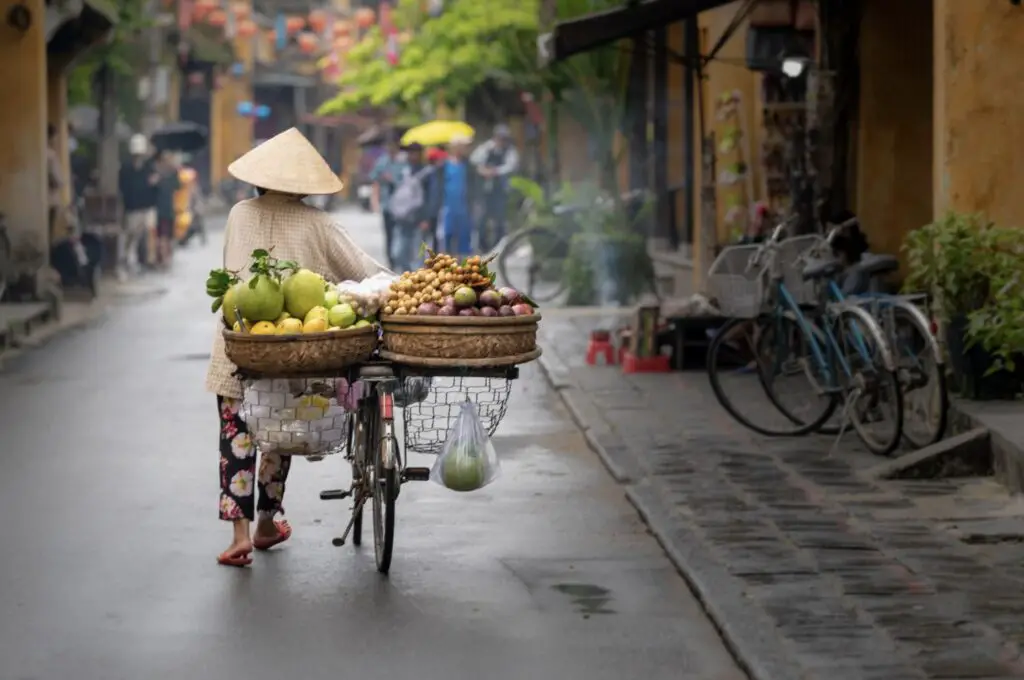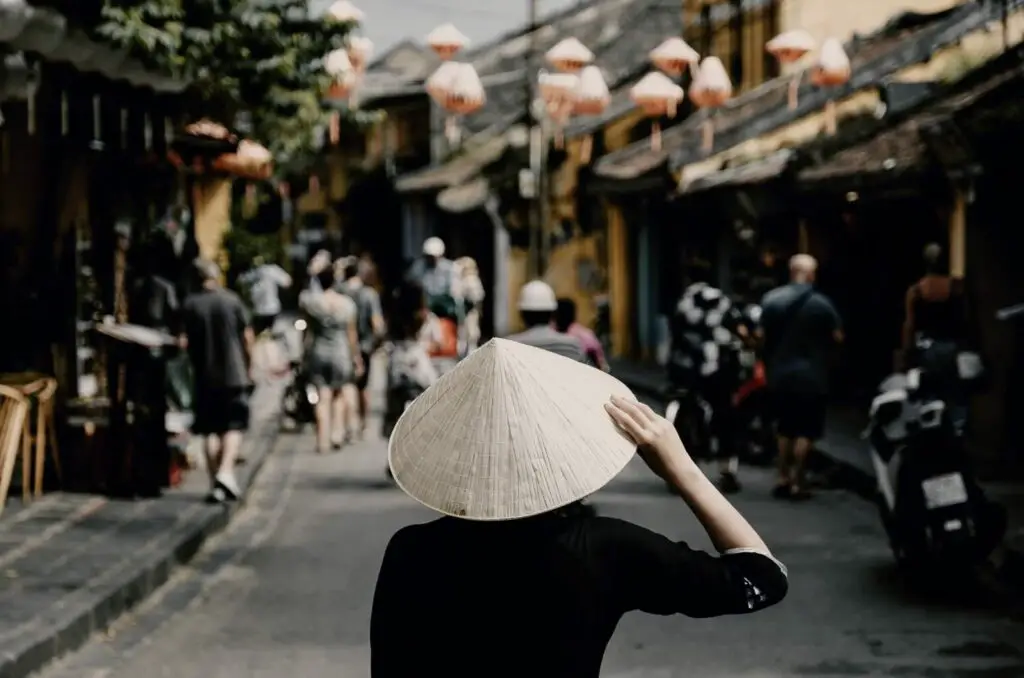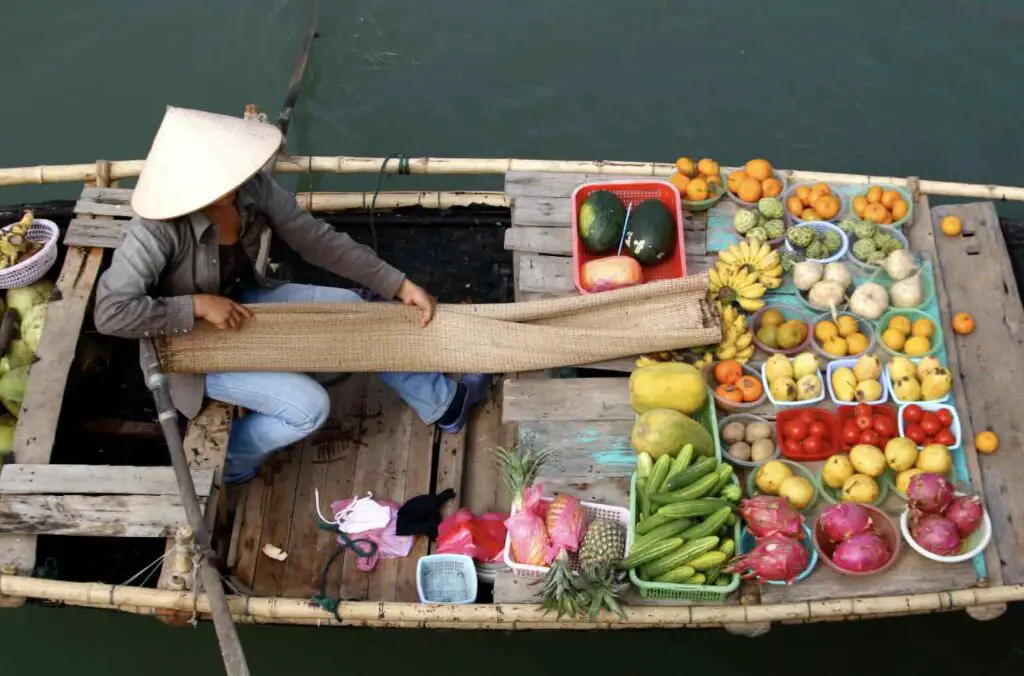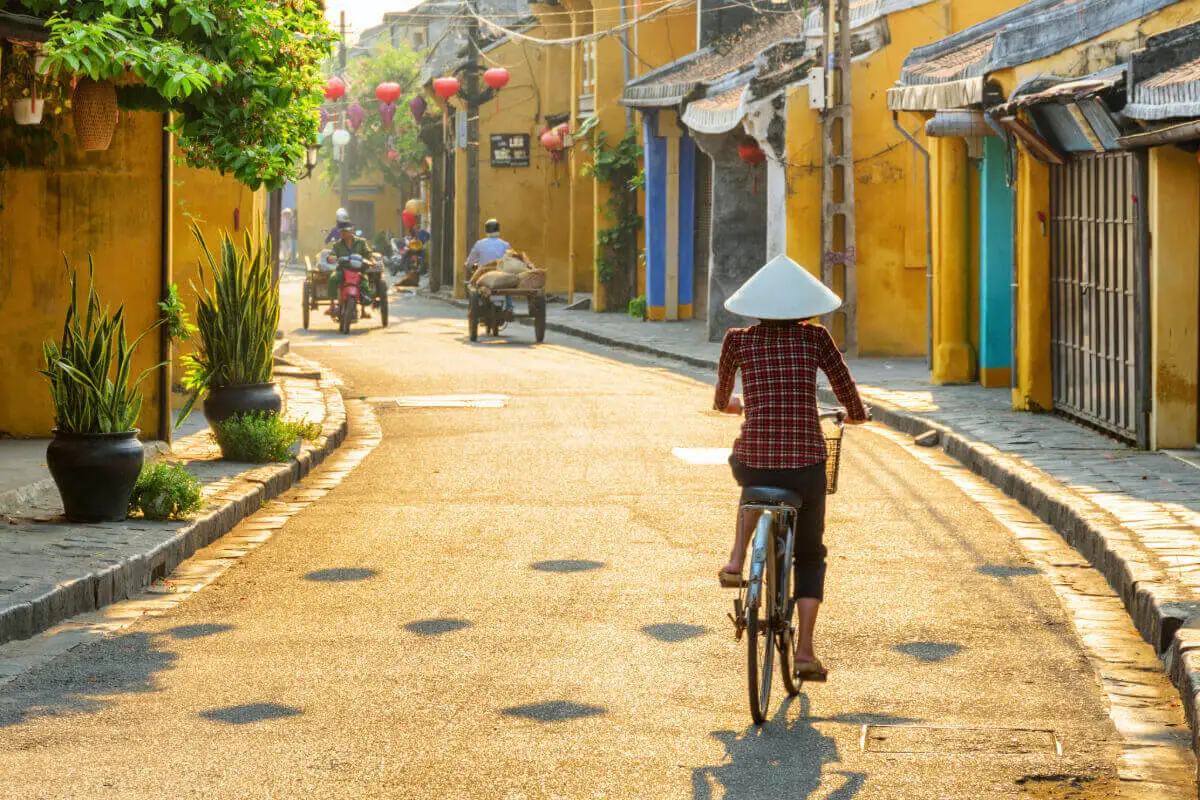The Vietnam conflict, lasting over two decades, indelibly shaped the nation it ravaged – its people, its culture, and its urban and rural landscapes. The echoes of this tumultuous period are silent yet resonate strongly in geographically significant locations scattered across the country, from the vital arteries of Hanoi to the meandering tunnels of Cu Chi. Coupled with this enigmatic landscape are the enduring reflections of the local populace, who are the living relics of this history.
Their unique narratives, woven with tales of despair and resilience, teach us the true meaning of war beyond the generic constructs of victor and victim. Similarly, we find that not only did the physicality and mentality of the nation bore the brunt of this war, but the cultural fabric was irrevocably altered. And yet, beyond the remnants and scars of the war, life strides on. The bustling markets, verdant farms, and lively schools are a testament to a nation that reflects, remembers, and never ceases to progress.
Table of Contents
- Understanding the Vietnam War Through Travels
- Interacting with Localities – The Stories Untold
- Cultural Impacts of Conflict
- The Wandering Muse – War and Beyond
- Related Questions
Understanding the Vietnam War Through Travels
Unearthing History: Landmarks that Immortalize the Vietnam War
Whether you’re a seasoned traveler who loves adventures, a history enthusiast, or a local looking to connect with your roots, Vietnam offers a scintillating glimpse into the past.
This Southeast Asian gem is brimming with landmarks once central in one of the most significant conflicts in history – the Vietnam War.
From museums housing countless artifacts to battlegrounds that still carry the echoes of yore, these places provide a potent sense of a nation reborn from a tumultuous past.
The War Remnants Museum, located in bustling Ho Chi Minh City, is an imperative visit for anyone aiming to grasp the raw realities of the Vietnam War. Brimming with thought-provoking exhibits, visitors encounter a trove of military vehicles, weaponry, and chilling photography. The experience is intense yet an enlightening reflection on endurance and peace after war.
On a refreshing note, set amidst lush greenery, the famous Cu Chi tunnels transport you right into the heart of the war. From hiding places to strategy rooms, these extensive networks of underground tunnels illustrate the resilient spirit of the Vietnamese.
While revisiting history in these cramped passageways might seem overwhelming, remember, it’s’ all about plunging into the depths of history, literally!
North of Ho Chi Minh City, the Reunification Palace remains a testament to the end of the Vietnam War. Known formerly as the Independence Palace, this landmark symbolizes the peace and unity that followed one of the world’s most infamous wars.

Stroll through the stately halls, immerse in the 1960s architecture, and allow the essence of resilience to sink deep into your soul.
The Hanoi Hilton, or Hoa Lo Prison as it is officially called, serves as another poignant reminder of the intense struggles during the war period. Once a place of incarceration for American Prisoners of War, it now houses exhibits that narrate stories of courage and endurance.
Venture north to the DMZ, or the Demilitarized Zone, often referred to as Vietnam’s ground zero. Buffering between former North and South Vietnam, the hauntingly serene landscapes are a surreal contrast to the fierce battles that once rocked its grounds.
A visit to the Khe Sanh Combat Base in the region, where remnants of airstrips and bunkers continue to whisper stories of persistence, is necessary.
Last but not least is My Lai, a humble village in central Vietnam with an unspeakable past. It’s the site of one of the war’s most tragic events, the My Lai massacre. A memorial site stands today offering a solemn tribute to the innocents lost, a sobering reminder of the dark side of conflicts.
Exploring Asia’s best-kept historical secrets isn’t just a trip down memory lane. It’s about connecting with a resilient nation that has risen from the ashes of war, embracing light and warmth.
From Ho Chi Minh City to rural My Lai, each landmark is a testament to how far the country has come, gifting travelers a treasure trove of timeless tales. So, pack your bag, lace up your boots, and step into the captivating past of Vietnam.
Interacting with Localities – The Stories Untold
The Unseen Face of the Vietnam Conflict: Embracing Local Interactions
Immersing in the cultural pulse of Vietnam is like swimming in a sea of stories, sounds, smells, and sights. To experience Vietnam from a more profound perspective beyond historical landmarks, there’s no better place than the heart of its local communities.
Traveling narratives often tiptoe around the edges of controversial topics like the Vietnam Conflict, but sometimes those shadows are where the most exciting stories lurk.
Try swapping out the guidebook occasionally and conversing with a local over a traditional Vietnamese coffee. Discover how the war echoes in their experiences, family histories, and perceptions of the country’s future.
You’ll learn that the echoes of the past are memorialized in museums and live vividly in vibrant street-side conversations and anecdotes.
Think about dropping by public spaces like parks or markets where locals gather. Places like these turn into informal stages where stories of the Vietnam Conflict unfold, allowing a peek into the personal lives affected by war.
Listen to tales shared by older locals, and you’ll unravel a story not found in the pages of your history book.
Don’t miss out on local workshops where master artisans continue age-old traditions. You might learn how the Vietnam Conflict shaped the country’s arts and crafts in places like these. Appreciating handicrafts isn’t only a tribute to their beauty but a nod to the resilience of a people that stood the test of a violent past.

Further exploration allows one to dive into local literature and cinema – two media that bravely tackle the war’s complexities. Delving into artwork, music, films, and novels born out of the post-war era, one may be surprised at how intertwined the past and present remain.
These works beautifully encapsulate the loss, hope, and triumph that continues to shape Vietnam’s identity today.
Experimental travelers can also attempt to grasp the language. Learning Vietnamese is no easy task with its six-tonal system, but it can open a more prosperous, more profound understanding of the Vietnam Conflict.
How were emotions couched in the local language? How did the tongue twister of a language play a role in the war-side communications? Uncovering such nuances may be a challenge, but the rewards are unparalleled.
Finally, remember that understanding Vietnam entails recognizing its transformation since the conflict. Vietnam is a phoenix risen from the war’s ashes, boasting a unique blend of tradition and cinema, a mix of skyscrapers and ancient temples, an amalgam of French croissants, and piping hot phở. The Vietnam Conflict may be part of its DNA but not its entirety.
Treat every interaction as a delicate dance with history, filled with nuances and revelations. Unraveling the Vietnam Conflict might not be a simple adventure, but it assures a deep and enriching understanding that no textbook can match.
So, get ready to dive into Vietnam’s living, breathing history; a chapter is waiting to be written by you.

Cultural Impacts of Conflict
Ministries, Cafes, and Bomb Craters: Trailing the Vietnam War through a Layered Lens
Wandering in Vietnam is like trailing through a complex tapestry with narratives of joy, survival, resilience, and a deep-rooted cultural heritage. Each step taken takes one closer to understanding the profound impact of the Vietnam War on its culture.
The next step in the journey takes one past the apparent symbols of war to explore the subtle threads that stitch together the modern-day fabric of Vietnamese society.
Cafes – The Silent Witnesses
A far cry from the thunderous battlegrounds, the humble Vietnamese coffee shop turns into a powerful medium to reveal the layers of the Vietnam War’s impact.
Walk into any café, and you’re immediately wrapped in the embrace of war tales narrated through faded photographs, vintage memorabilia, and, at times, through the resilient survivors themselves.
Coffee, a symbol of shared virtues of patience and endurance, continues to fuel debates and spark conversations, stitching together past and present stories of survival and evolution.
Vibrancy of Arts and Crafts
The Vietnam War left an indelible imprint on various forms of arts and crafts. The thriving art scene pulsates with a vibrant fusion of traditional and contemporary motifs influenced by the war.
Much of the country’s artwork, from propaganda posters to soldiers’ graffiti on helmets, has thought-provoking tales of the war and its aftermath deeply etched into them.
Storytelling through Literature and Cinema
The cinematic world and literature offer a profound glimpse into the multi-layered psyche of Vietnam during and after the war. Many renowned Vietnamese authors and filmmakers have used the war as a backdrop for their storytelling, offering a mix of factual, symbolic, historical, and artistic perspectives on the conflict and its effects.
Plunging into Vietnamese cinema and literature is a riveting journey that reveals the complexities of the war woven into everyday life.
Local Conversations – A Living Chronicle
Engaging in a delicate dance with historical sensitivity is as valuable as exploring physical war remnants. When traveling, one should tread gently when initiating conversations related to the war.
Be it a friendly banter with a cyclo-driver or a subtle chat with a street vendor, these outwardly mundane interactions often unfold startling personal narratives from the war, providing a deeper understanding of the conflict’s impact on the country and people.
Finally, one cannot discuss the Vietnam War and its enduring legacy without acknowledging the remarkable transformation of Vietnam. The nation’s resilient spirit is evident in its steered narrative from war-torn to a captivating hotspot for cultural tourism.
Threadbare battlefields are now humming with life, scarred landscapes have reemerged as verdant deltas, and the broken symbols of the war have become time-worn milestones of progress.
War-streaked yet vibrantly alive, Vietnam offers a heavy dose of history, culture, and resilience. To understand the depth of the war’s impact is to venture far beyond the tourist trail, to engage in genuine conversations, understand the symbolism embedded in art, literature, and cinema, and above all, walk through the streets of Vietnam with a respectful gaze that honors its past while celebrating its present.

The Wandering Muse – War and Beyond
For a comprehensive understanding of the Vietnam Conflict, deviating from traditional historical landmarks and treading a less conventional path is essential.
Meander through Vietnam’s vibrant, bustling streets and lose yourself in the commonplaces, the seemingly mundane steeped in history and untold war narratives.
Sipping on the signature dense, viscous drop of coffee in traditional Vietnamese cafes, the archaic corners and authentic aroma narrate stories of hushed whispers and clandestine meetings during the war era.
Such spots were places for respite, and wartime journalists and writers often transformed them into ad-hoc offices. These cafes bear silent testimony to the war and its ramifications, fostering deeper insight into the historical context of Vietnam.
The aftermath of war resonates profoundly within Vietnam’s artistic and craft sector. A visit to local markets reveals intricate lacquerware, ceramics, and silk embroidery—a quiet homage to resilience in the face of devastation.
These arts and crafts, while being aesthetically pleasing, are laden with symbols of resistance, survival, and hopeful anticipation for a peaceful era. By buying a handmade piece of art, you’re holding a fragment of Vietnam’s history that, though not overtly linked to war, sprung in response to its circumstances.
A comprehensive understanding of wartime can never be truly realized without delving into the realm of literature and cinema. The war beautifully translates into the poignancy of Vietnamese literature and the reel of cinematic experiences that capture the essence of those tumultuous times.
From Bảo Ninh’s catastrophic images in ‘The Sorrow of War’ to the gripping portrayal in the movie ‘Cyclo,’ they collectively unmask the layers of the war from a rarely seen Vietnamese perspective.
Engaging with local people also proves insightful. People’s anecdotes offer a vivid reconstruction of war times—personal accounts far more moving than standard war records.
The stories narrated by elderly locals often passed down across generations, paint an intimate picture of the past and the healing process of a country emerging from the ashes of war.
Vietnam has consciously evolved from its war-torn past to an intriguing cultural hotspot. The transformation is palpable everywhere—from cities rising like a phoenix from the ashes exemplifying architectural progression to the younger generation’s approach towards peace and reconciliation.
However, this doesn’t erase the imprints of the conflict; instead, they are part of Vietnam’s unique character, interweaved within its social and urban fabric.
Venturing beyond the usual war destinations in Vietnam provides a broader spectrum of insights about the war—an understanding that acknowledges not just the destruction but the resilience and progress that came after.
A wanderer’s expedition in Vietnam is a subtle dance with history, a step towards unraveling the Vietnam Conflict’s complexity in a deep, enriching perspective.
Every nook and corner of Vietnam has a story, from enduring the taste of traditional wartime meals to humbly observing how the war shaped today’s societal norms. And, in listening, there is a world to discover.

A trip through Vietnam is not merely a voyage through a physical space, it is a journey through history; a lesson in resilience and rebirth. These esoteric testimonies breathe life into the cold historical facts and figures, allowing an exploration of the unspoken truths of the Vietnam conflict.
We observe that they transcend the binaries of victory and loss, extending into realms of human endurance, cultural evolution, and societal resurgence. Therefore, as you delve into the normal Vietnamese lifestyle or stand at the vital war landmarks, a vast panorama unfolds – one of pain, perseverance, metamorphosis, and unyielding progress.
Amid the shreds of a forgotten war, the Vietnamese spirit stands undeterred, sprouting hope and courage, grooming a landscape that has learned to balance the weight of its past and the promise of its future.
At A Bus On A Dusty Road, we talk about travel, life, and ex-pat living. We are all about “Living Life As A Global Citizen.” We explore social, cultural, and economic issues and travel.
We would love to have you be part of our community. Sign up for our newsletter to keep up-to-date by clicking here. If you have any questions, you can contact me, Anita, by clicking here.
Listen to our Podcast called Dusty Roads. You can find it on all major podcast platforms. Try out listening to one of our podcasts by clicking here.
Subscribe to our A Bus On A Dusty Road YouTube Channel with great videos and information by clicking here.
Related Questions
How Cold Is Winter In Hanoi, Vietnam?
Winters in Hanoi can get quite cold, especially on a few days during the winter when it rains and the temperatures drop. The houses in Hanoi do not have central heating, so it can feel cooler in your home than outside. During the wintertime, the temperature can change daily and week to week.
You can learn more by reading How Cold Is Winter In Hanoi, Vietnam? by clicking here.
Living Through The COVID Lockdown in Hanoi, Vietnam
The day Hanoi started its COVID lockdown, I came out of the Vietnam French Hospital. I was in the hospital for a week due to a cycling accident on the Long Bien bridge; I needed an operation on my hip area.
By clicking here, you can discover Living Through The COVID Lockdown in Hanoi, Vietnam.
Is It Vietnam Or Viet Nam?
The words both Vietnam and Việt Nam are correct to use for the country of Vietnam. Vietnam should be used when referring to or writing about Vietnam in English. Việt Nam, or splitting Vietnam into two words, is used when referring to Vietnam in the Vietnamese language.
By clicking here, you can discover Is It Vietnam Or Viet Nam?


